By Michael Fager
In November 2019 a group of MyRWA staff and volunteers built an osprey nesting platform on the island in Macdonald Park in Medford. This platform—built according to plans provided by MassWildlife—is designed to provide a nesting spot for ospreys along our river.
As the Mystic was settled by Europeans, developed, industrialized, and polluted, habitat was lost and nesting ospreys disappeared. However, recent work by MyRWA and others to improve the water quality in the Mystic River and its watershed—as well as work to increase the size and success of the annual herring migration—has resulted in the improvement of conditions in the watershed for ospreys. Over the last 10 years sightings of ospreys during the herring migration have increased. In 2018 a nesting pair was discovered in a light tower near the Schrafft’s Center in Charlestown.
Osprey with fish | Michael Fager
This new osprey platform was placed on the island with safety in mind. It can be easily observed from the mainland part of the park, as well as the Rt. 28 bridge, but is challenging for humans or prey to access. Osprey is a migratory species, and occurs in Massachusetts only in the nesting season. With any luck, we will observe them on the Mystic—and perhaps nesting on the new platform—in March.
To build and install the platform, we had to canoe the materials—including a 12 foot beam— across the Mystic, starting at Blessing of the Bay boathouse in Somerville. Take a look at the process here:
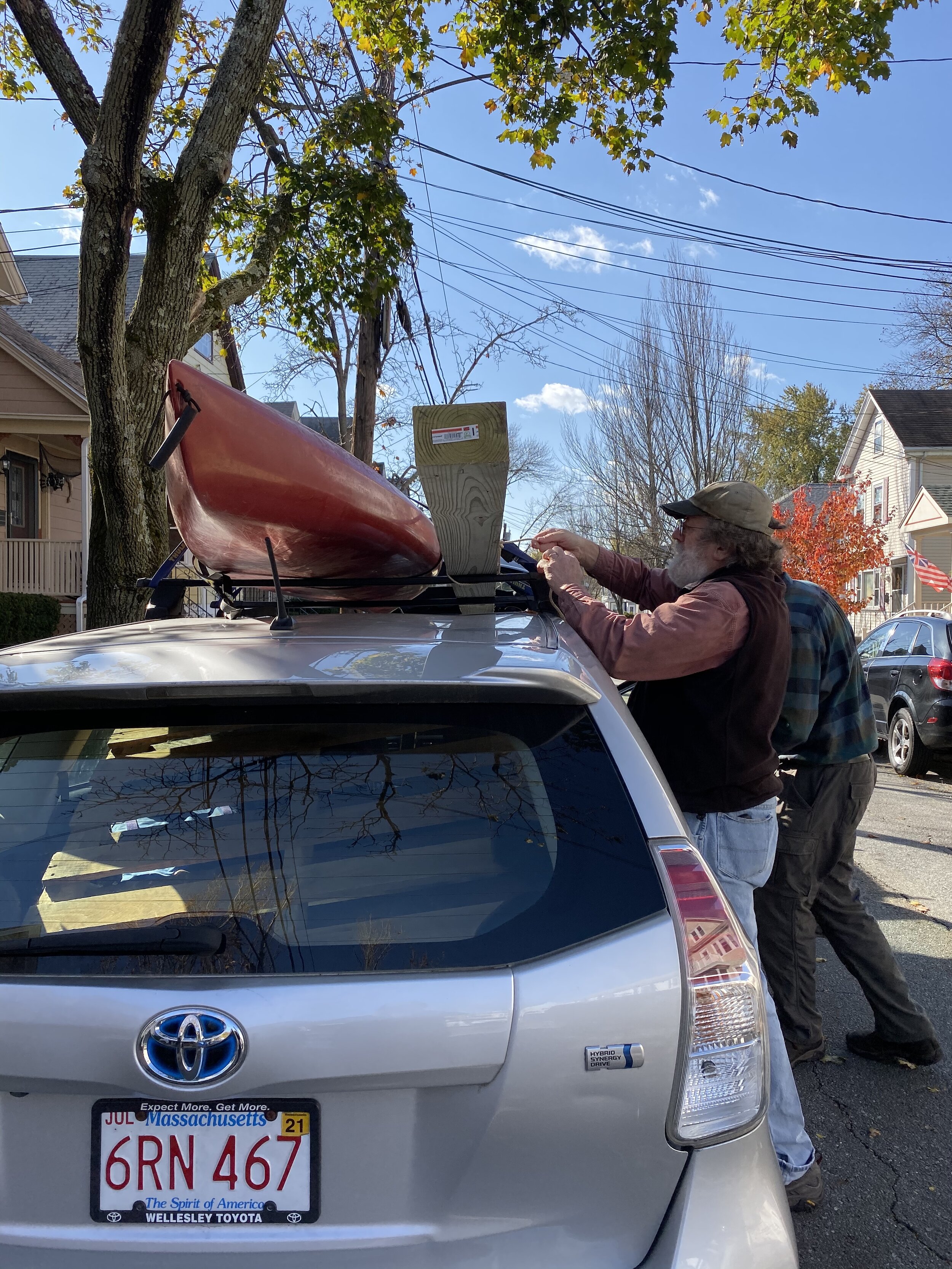
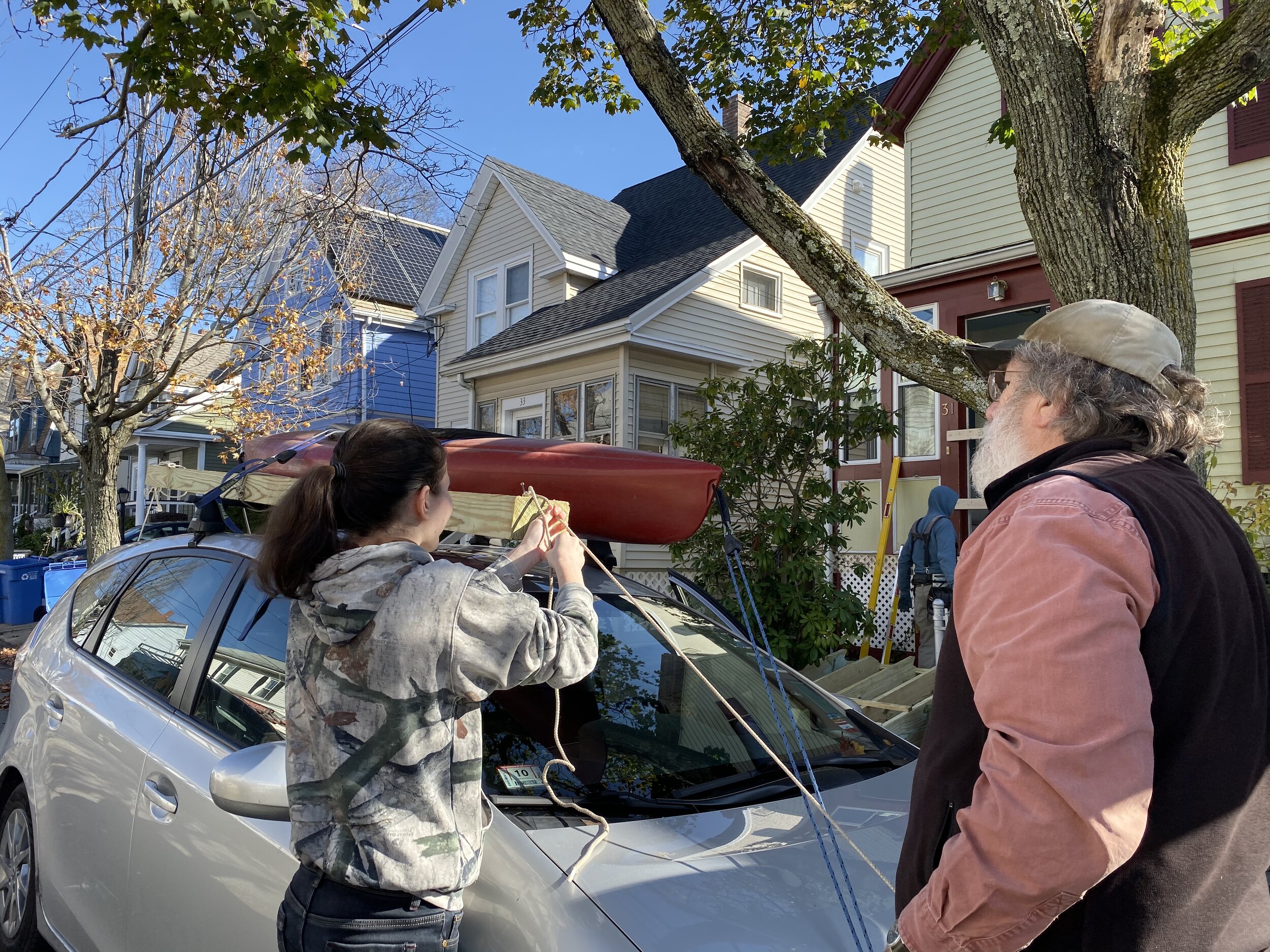

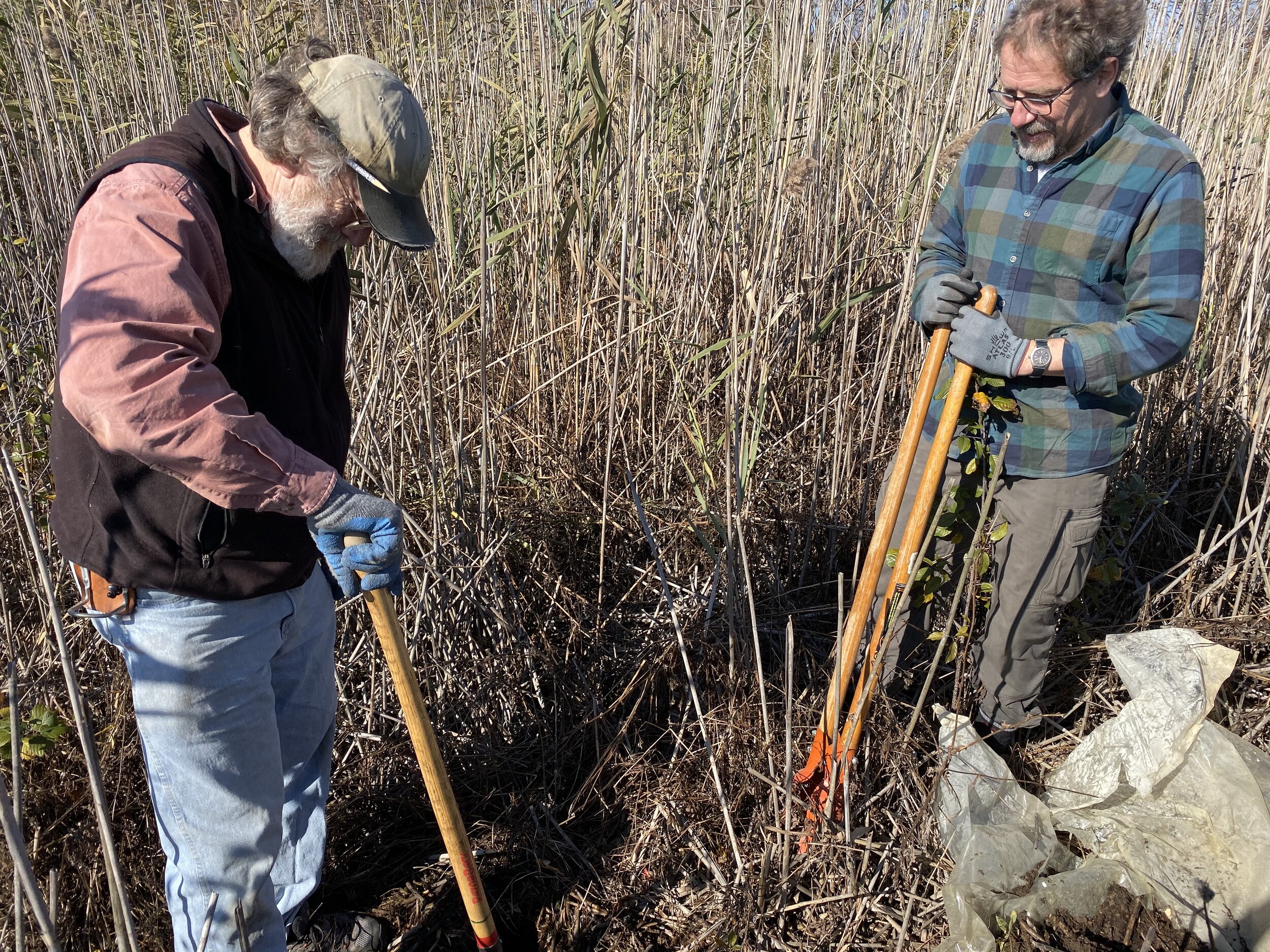
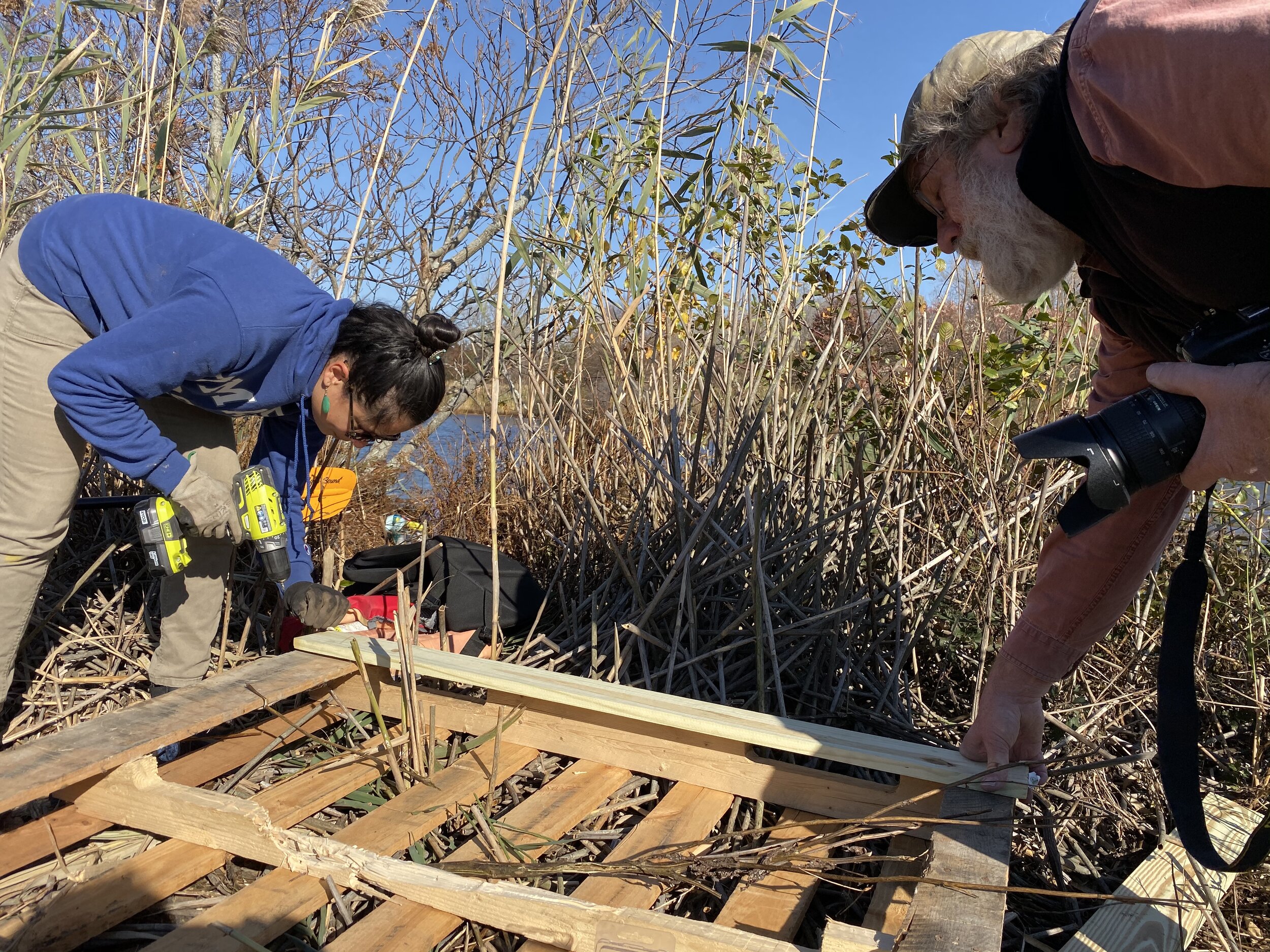
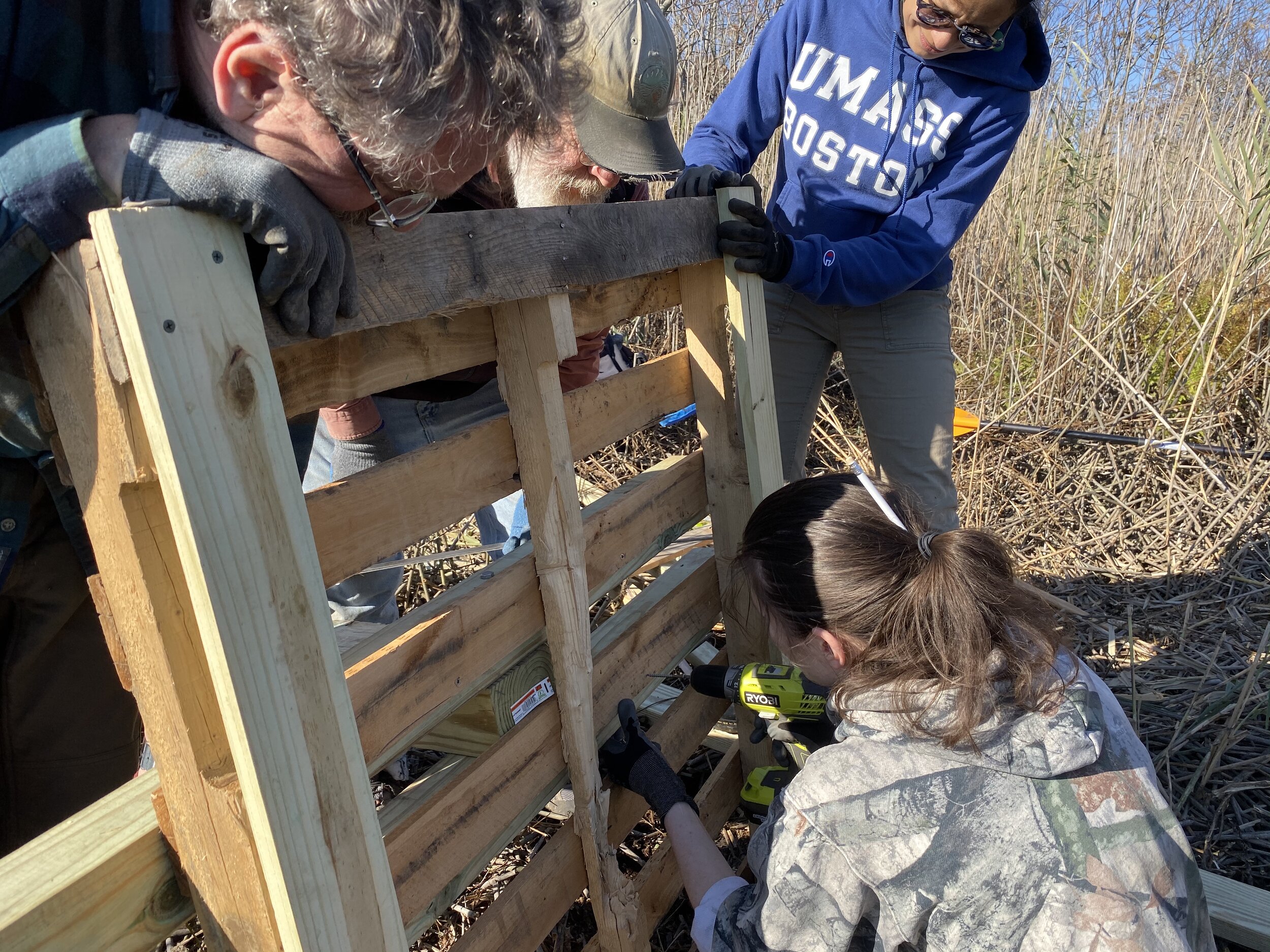
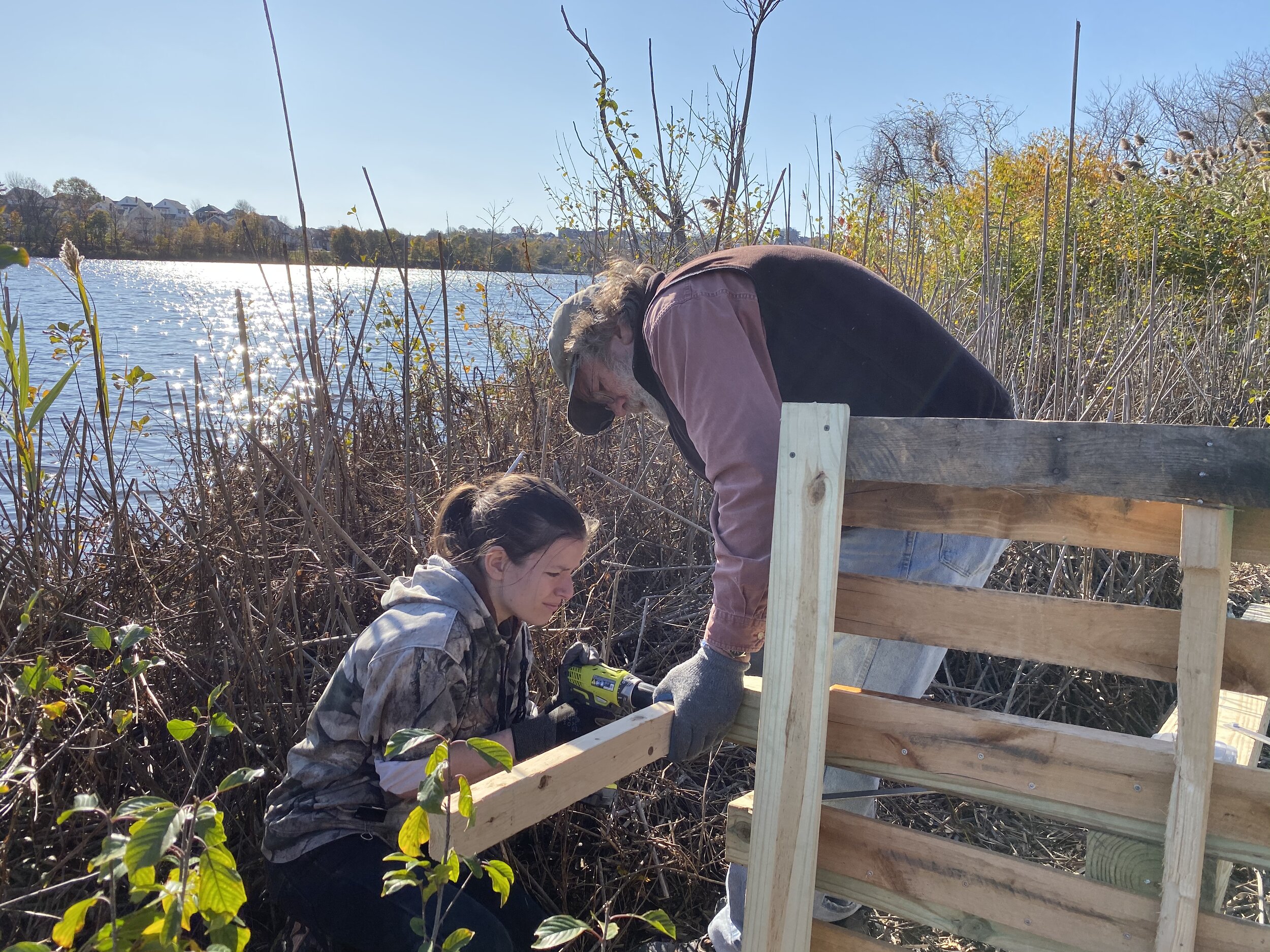




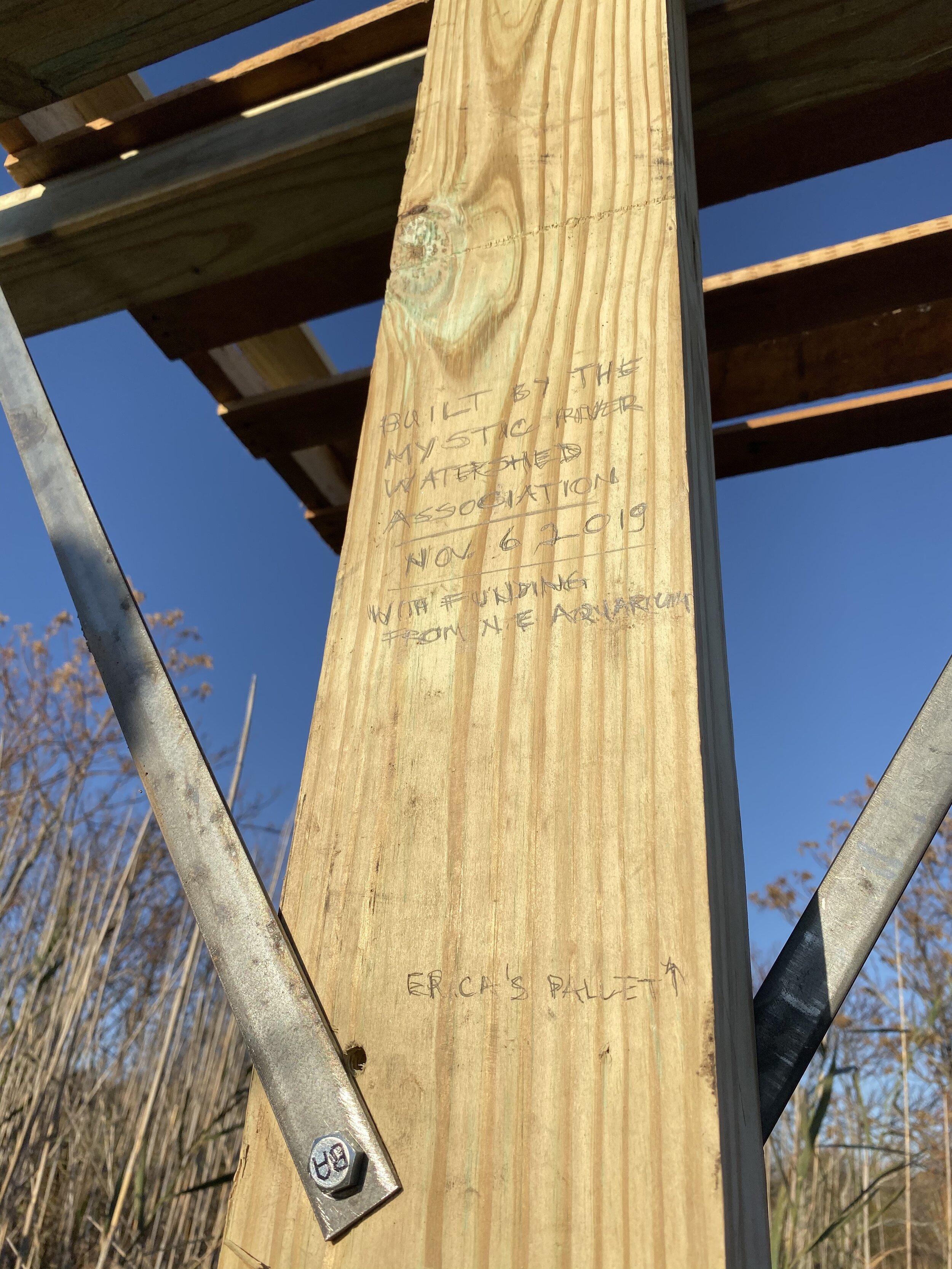
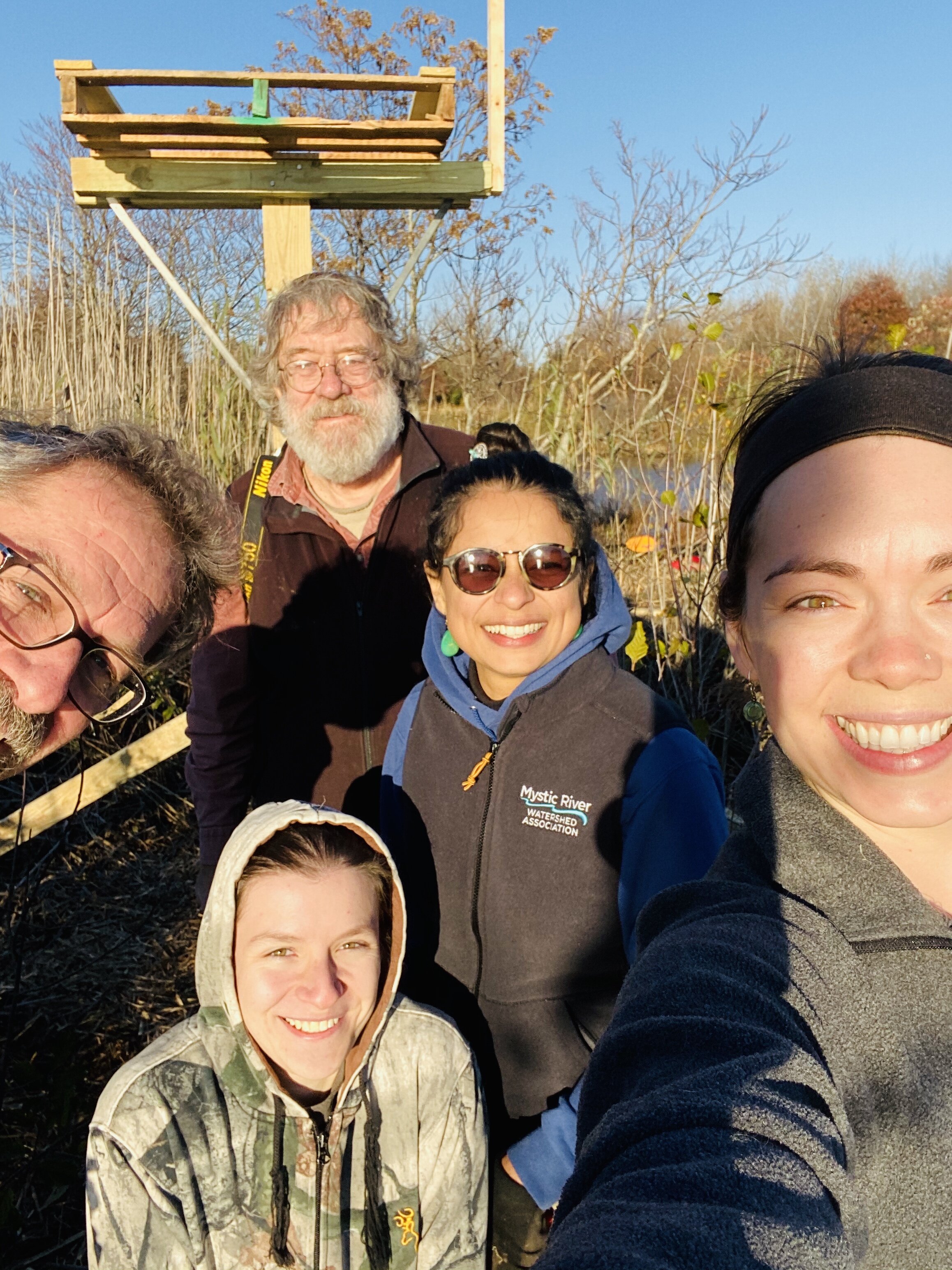
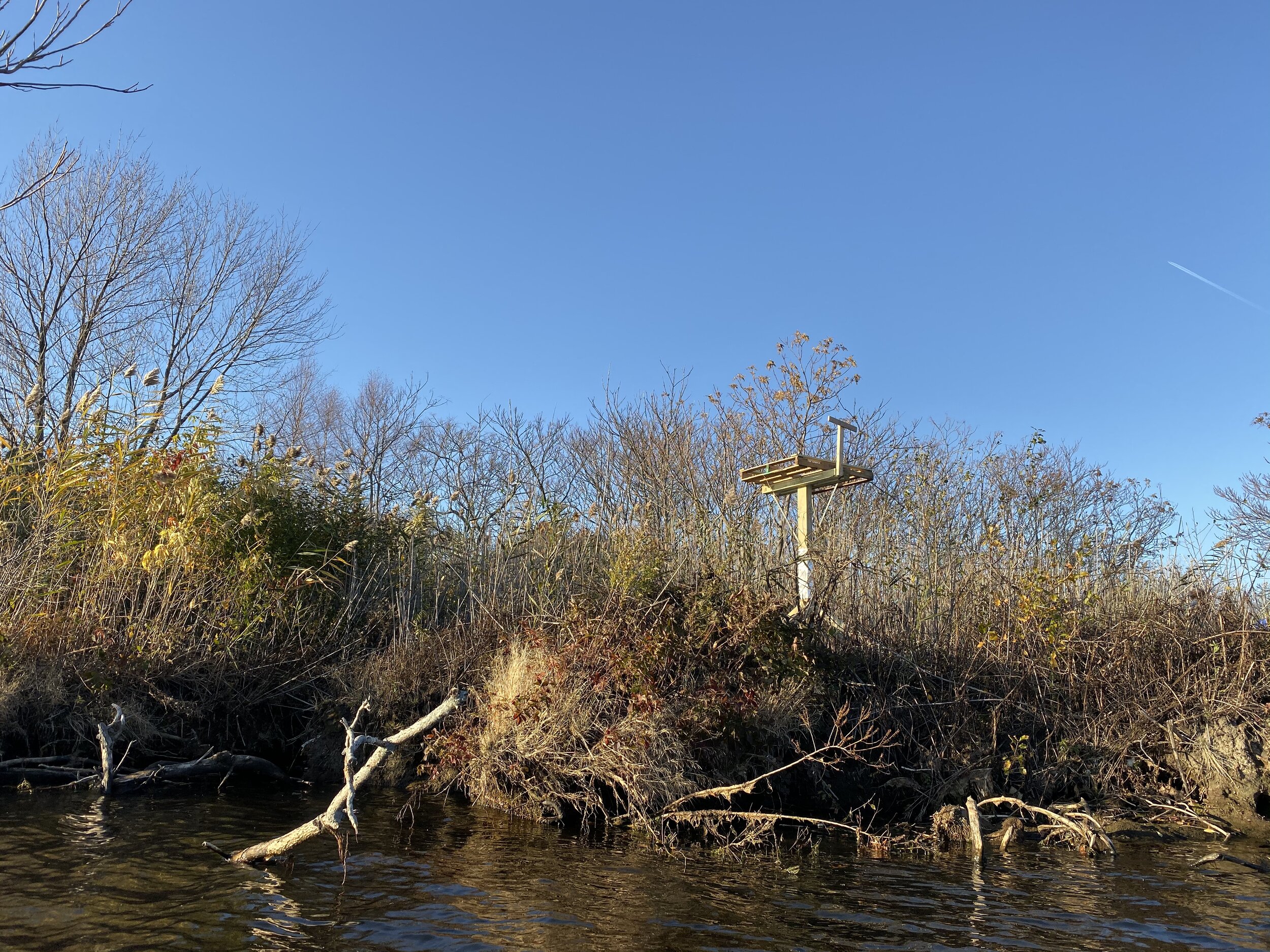
The osprey is a unique North American hawk in that it preys almost exclusively on fish. Ospreys, once fairly common, were severely decimated by the impacts of habitat loss and pesticides such as DDT on birds of prey in the 1950’s and ‘60’s (much like Bald Eagles.) When ospreys ate fish contaminated with pesticides, those pesticides bioaccumulated in their bodies resulting in severe thinning of the shells of their eggs. This shell thinning caused the failure of many nests resulting in a serious decline of osprey numbers. Ospreys, which once commonly nested along the coast of southern New England, almost disappeared from our region. Manomet Bird Observatory reported that in 1964 there were only 11 known pairs of nesting ospreys in Massachusetts. It was only through banning certain kinds of pesticides and the extensive development of nesting platforms in appropriate habitat that osprey populations returned to near their prior numbers.
As osprey are migratory, we only see the species during their spring nesting season. They arrive in March, and begin the search for appropriate nesting sites. Ospreys build large stick nests in trees, rock cliffs or promontories. However, ospreys are not picky and will nest on almost any site that is near water and safe from mammalian predators. They nest readily on telephone poles, light towers, cell phone towers, channel markers, and artificial platforms built specifically for ospreys. There they will build a large stick nest, and lay a clutch of usually two eggs (although clutch sizes of 1-4 eggs have been recorded). Hatching takes about 4-5 weeks, and then approximately 55 days from hatching to fledging. Once they fledge, the young ospreys will hang around the nest until they migrate.
Ospreys migrate south in September. When they leave Massachusetts, ospreys move south along the coast, until they reach Cape Hatteras. From there they move directly south over the ocean to the Bahamas, Cuba, and Hispaniola, and then south to the northern coast of South America.
Osprey in flight | George McLean







